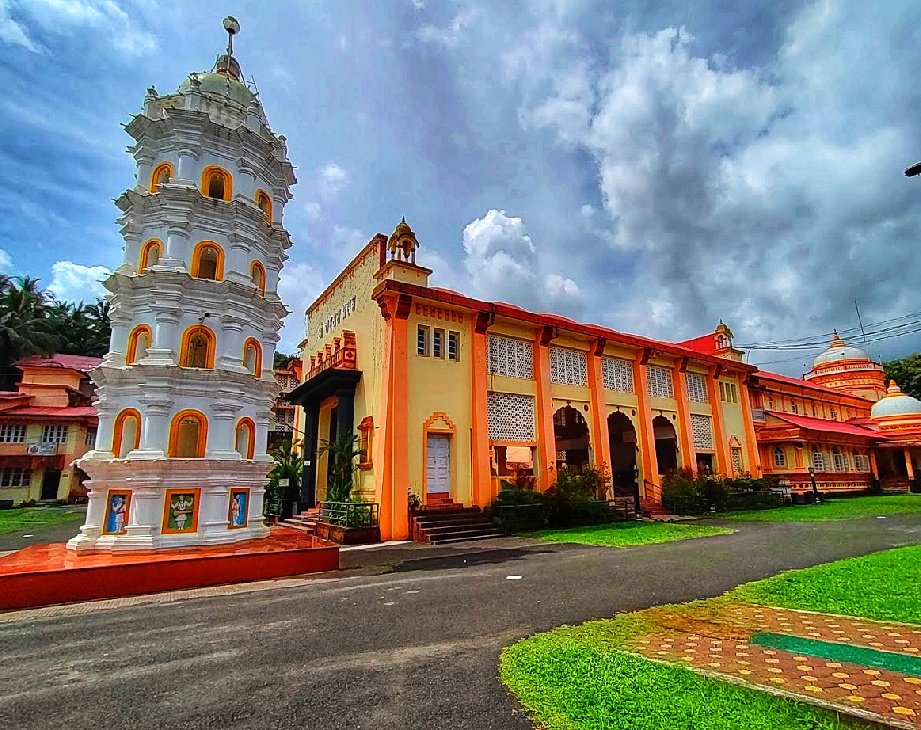History

“Every stone in this temple tells a story, etched with the prayers and hopes of countless devotees who have sought solace and enlightenment within these sacred walls, reminding us that the pursuit of the divine is a journey that never ends.”

Shri Ramnath is a Divine Symbol of the unity of Hari (Vishnu) and Hara (Shiva). Ramnath is a compound word formed by the unity of two words Rama and Natha. Ramnath means the Lord of Rama. In another way Ramnath also means the one whose Lord is Rama. So, the Lord of Rama is Shiva and the Lord of Shiva is Rama.
During the churning of ocean, Lord Shiva drank Halahal (poison) that came out of churning and He held this poison in His throat. His throat became blue and He started getting burning sensation. That sensation was soothed by the recital of Rama Nama. So, Shri Ramnath is a symbol of unity of Hari and Hara and we should be proud of being Mahajans and Kullavis of such a Daivat.

Shri Ramnath Devasthan
The time period is that of about a thousand years back and it is the era of the Kadambas, who hold sway over Goa. The air is crisp and pure, washed clean by the erratic showers of rain the night before. The river Aghanashini, (today’s Zuari), sparkling and pristine, iridescent in the early morning sunlight, snakes its way gently to the Arabian Sea. Bountiful fields of the darkest green, swaying happily in the morning breeze, border the khazan lands, which in turn line the river banks.
The mud roads freshly washed clean by the rains and shaded by huge trees are busy with people going about starting their day’s routine.

In the distance in the ward of Vargao, is the temple of Shri Ramnath. It is stately with graceful lines built from carved wood and sculptured stone, mirroring both the prosperity and spirituality of its Gaonkars.
The new day has been festively heralded by the chaughuda in the early morning and the day’s ceremonies have already started at sunrise with Nirmalya Visarjan. Devotees are now wending their way inside the temple, with offering of flowers, dhoop and coconuts, all with devotion overflowing in their hearts. An early morning darshan to start off the day; fulfilling, productive and happy.
Chantings from the nearby vedshala and patshala resonate in the early morning air, indicate that the younger generation’s education in the Vedas, as well as in the shastras of Logic, Law, astrology. grammer etc. is in full swing. The younger generation being groomed today, will one day serve in the Kadamba courts as Royal advisors or
dispensers of Law, or as Royal emissaries to other kings and kingdoms guarding Royal and State interests. Others will migrate to Kingdoms beyond for higher prospects and still others will remain in Lotli, tending to the affairs of the Gaonkari; steering the course of the village administration; looking after the temples and the rites and rituals through the year; trading on a village level as well as by sea with distant and exotic countries.
Once settled they fulfill their sacred duty of “daan” by using their wealth in worthy acts of piety and humanity.
For example a copperplate inscription found with a Keny family of Kunkalli speaks of a certain Gandogopala Keni at Panjar Khani (Panzorconi near Cuncolim). He served the Kadamba Kings and in 1106 A.D., had constructed a water tank for irrigation and installed a Brahmapuri putting up three houses for Brahmins and a temple. There still exists the remnant of a tank called “Gandagopalachem Tallem”, at the side of Ganci village with a mud embarkment about 1 km long and 2 mts high.













